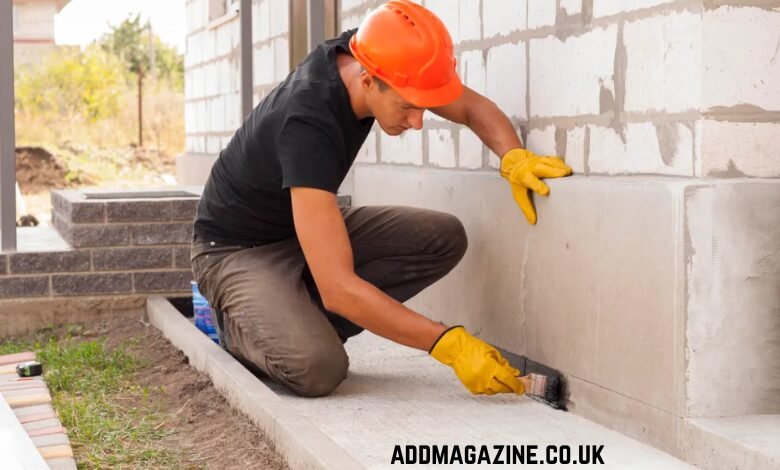Introduction
A dry, safe basement is an essential component of a well-maintained home. Moisture infiltration, flooding, and water damage can compromise the structural integrity of a house, damage belongings, and create conditions conducive to mold and mildew growth. Homeowners increasingly rely on basement waterproofing to prevent these issues and maintain a secure, healthy living environment. This process involves identifying potential sources of water intrusion and implementing solutions to keep basements dry and functional.
Water-related problems in basements are more than a minor inconvenience. Persistent moisture can lead to wood rot, weakened foundations, electrical hazards, and compromised indoor air quality. Addressing these concerns proactively through proper waterproofing measures not only safeguards a home but also enhances its long-term value.
Understanding Basement Waterproofing
Basement waterproofing is the process of protecting below-grade spaces from water penetration. This involves evaluating the foundation, walls, floors, and drainage systems to identify areas where moisture may enter. Waterproofing strategies vary depending on the type of basement, the surrounding soil, and the severity of water issues.
The goal of basement waterproofing is twofold: to prevent water from entering the basement and to manage any water that does infiltrate efficiently. Modern techniques use a combination of interior and exterior solutions to create a comprehensive defense against moisture. By doing so, homeowners can avoid costly repairs, maintain healthy indoor air quality, and create functional spaces that can serve as storage, recreational areas, or additional living quarters.
Signs That Your Basement Needs Waterproofing
Identifying the need for basement waterproofing early can prevent extensive damage and reduce repair costs. Common warning signs include:
- Visible water stains or discoloration on walls or floors – Persistent damp spots indicate water infiltration.
- Cracks in foundation walls or floors – Small cracks can expand over time, allowing water to seep through.
- Musty odors or mold growth – Mold thrives in damp conditions, signaling moisture problems.
- Efflorescence – White, chalky deposits on walls indicate that water is moving through masonry, leaving behind salts.
- Standing water – Pools of water on basement floors are a clear indicator of drainage or waterproofing issues.
Detecting these signs early allows homeowners to implement waterproofing solutions before the problem escalates.
Benefits of Basement Waterproofing
Investing in basement waterproofing provides multiple benefits, from structural protection to improved quality of life.
1. Structural Protection
Water infiltration can weaken a home’s foundation, causing cracks, shifting, or settlement. Proper waterproofing safeguards the structural integrity of the house, reducing the risk of costly repairs and long-term damage.
2. Prevention of Mold and Mildew
Basements with excess moisture create ideal conditions for mold and mildew growth. Mold not only damages materials but also affects indoor air quality, which can trigger allergies and respiratory problems. Effective waterproofing helps maintain a healthy environment by keeping the basement dry.
3. Increased Home Value
A waterproofed basement enhances property value. Potential buyers are more likely to invest in a home with a dry, functional basement, as it indicates proper maintenance and reduced risk of water-related problems.
4. Energy Efficiency
Damp basements can lead to higher humidity levels throughout the home, making heating and cooling systems work harder. By keeping the basement dry, waterproofing helps maintain consistent indoor conditions and can reduce energy costs.
5. Enhanced Usable Space
A dry basement can be transformed into valuable living space. Homeowners can utilize it as storage, a home office, gym, or recreation area. Waterproofing ensures that the basement remains functional and safe for these purposes.
Types of Basement Waterproofing Solutions
Basement waterproofing methods vary depending on the source and extent of water intrusion. Common strategies include:
1. Exterior Waterproofing
Exterior waterproofing involves creating a barrier on the outside of the foundation to prevent water from entering. Techniques include:
- Excavation and drainage installation – Digging around the foundation to access walls and install waterproof membranes or coatings.
- Exterior drainage systems – Installing drains or French drains to redirect water away from the foundation.
- Grading and landscaping adjustments – Ensuring that soil slopes away from the foundation to minimize water pooling.
2. Interior Waterproofing
Interior waterproofing addresses moisture that has already penetrated the basement. Solutions include:
- Interior drain systems – Installing channels along the perimeter of the basement floor to collect water and direct it to a sump pump.
- Sump pumps – Pumps remove collected water, directing it safely away from the foundation.
- Sealants and coatings – Applying waterproof paint or epoxy to walls and floors to create moisture-resistant barriers.
3. Crawlspace and Foundation Sealing
Some homes have crawlspaces or exposed foundation areas that allow moisture to penetrate. Sealing vents, cracks, and gaps with appropriate materials can prevent water intrusion.
4. Moisture Control and Dehumidification
Installing dehumidifiers or ventilation systems helps regulate humidity levels in the basement, reducing condensation and preventing mold growth. This method complements other waterproofing techniques for comprehensive moisture management.
Choosing the Right Basement Waterproofing Approach
Selecting the appropriate waterproofing method requires a thorough assessment of the basement and foundation conditions. Factors to consider include:
- Severity of water intrusion – Occasional dampness may only require interior sealants, while persistent flooding may necessitate exterior drainage solutions.
- Soil and drainage characteristics – The type of soil around the home and its drainage capacity influence the most effective approach.
- Budget considerations – Exterior waterproofing is typically more expensive but provides long-term protection, while interior methods may be more affordable for minor issues.
- Future use of the basement – If the basement will be used as a living space, comprehensive waterproofing is crucial to ensure safety and comfort.
Consulting with a professional waterproofing contractor can help homeowners determine the most suitable solution for their specific needs.
Maintenance and Prevention
Once a basement is waterproofed, ongoing maintenance is essential to ensure its effectiveness. Recommended practices include:
- Regularly inspecting for cracks or leaks in walls and floors.
- Ensuring gutters and downspouts direct water away from the foundation.
- Keeping landscaping and grading properly sloped to prevent water accumulation.
- Periodically testing sump pumps and drainage systems to ensure functionality.
- Monitoring humidity levels and using dehumidifiers when necessary.
Preventive maintenance reduces the likelihood of future water damage and prolongs the lifespan of waterproofing solutions.
Environmental and Health Benefits
Basement waterproofing in Ottawa,CA contributes to a healthier home environment by controlling moisture and preventing mold growth. Mold spores can trigger breathing difficulties, allergic responses, and various other health concerns. By keeping the basement dry, homeowners minimize these risks while also protecting stored items and structural materials from water damage.
Waterproofing also promotes sustainable practices. Diverting water away from foundations reduces soil erosion and potential contamination, contributing to responsible water management.
Conclusion
Investing in basement waterproofing is essential for maintaining a safe, healthy, and functional home. Proper waterproofing protects the foundation, prevents mold growth, enhances property value, and creates usable living space. By understanding the types of waterproofing solutions available, recognizing the signs of water intrusion, and implementing preventive measures, homeowners can ensure that their basements remain dry and secure.
Proactive basement waterproofing is not only a smart financial decision but also a critical step in safeguarding the long-term health and comfort of a home. With professional guidance and appropriate maintenance, homeowners can enjoy the peace of mind that comes from a well-protected, moisture-free basement.




